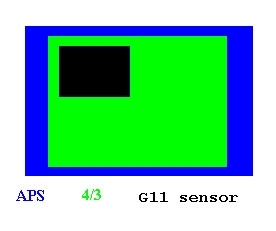anyone who's a regular reader of my blog will already know this, so please accept this as a quiet rant for the day ... for those who don't know then please read on and perhaps you'll gain something helpful.
For reasons I can't quite fathom many people seem to be lost on the reality of the words they use. People who are becoming photographers for instance eventually get to the position where they know (as opposed to just be able to repeat the words) that sensor size is important in image making.
This is not only from the perspective of so called Image Quality (goodness don't start me on that topic), but from the perspective of what images look like as an effect of the sensor size. In short the bigger the sensor the easier it is to get shallow depth of field, and (of course conversely) the smaller the sensor the easier it is to get very deep depth of field.
Now one of the first things that a budding photographer learns is that DSLR's take better pictures and that's due to some magic property of it being a DSLR(I guess I should be compiling a list of invalid assumptions shouldn't I). Sadly most people have no idea what a DSLR is (although to quote Monty Python, but clever people like me who talk loudly in restaurants will say its Digital Single Lens Reflex)and why its in any way desirable.
you can take that as a question to ponder ... if you already know the answer then great.
So with the scene set for what I'm talking about one of the most frustrating things for me is people saying (about four thirds and in particular micro four thirds) is something like:
relatively large sensor compared to typical P&S
Review writers at DPreview are also culprits here.
 Ok ... so lets look at the sizes of a DSLR (which is commonly APS sized) and a four thirds (oh, and recall please that the micro in micro four thirds is not that the sensor is micro, that would be daft. micro 43 uses a regular four thirds sensor. Its the camera that's micro) and a P&S or or even a high quality "prosumer" compact camera like a Canon G11 ...
Ok ... so lets look at the sizes of a DSLR (which is commonly APS sized) and a four thirds (oh, and recall please that the micro in micro four thirds is not that the sensor is micro, that would be daft. micro 43 uses a regular four thirds sensor. Its the camera that's micro) and a P&S or or even a high quality "prosumer" compact camera like a Canon G11 ...you can see quickly that the 4/3rds and the APS are really the same size as each other (and of course it will come as no surprise that some of the DSLR's you may pick up ARE 4/3 cameras) and that in fact the sensor in a common P&S is ... well ... puny compared to the micro 4/3
so, lets look at some cameras ... I happen to like DPREVIEW as a good source of the basic data on cameras ... so lets take some examples from them:
is this a DSLR?

of course it is ... but this camera has a 4/3 sensor in it
So then is this a DSLR

of course it is ... it has a APS sensor in it which as you saw above is just about the same size as the 4/3 sensor.
so when you look at this camera:

remember that even though it looks like a compact camera it actually has the exact same size sensor as in the Olympus above ... if it looks small, thats what all the fuss is about micro 4/3 and what differentiates them from compacts.
So if you have the faintest interest in understanding your cameras, please, keep this in mind and do your self a favour and go over to Dpreview and do a little reading and start to grasp why these cameras are not the same as this one.

/rant











1 comment:
Great article and a well-deserved rant. I'm a long-time 4/3 user and the bias against Oly is absurd. The difference between 4/3 & P&S is HUGE, the difference between 4/3 and APS is, in comparison, small.
Further, and this is the most important thing, it really should be all about image quality. Zuiko glass is really, really hard to beat, and the competition can only compete when they stop down to f8 or so. The 12-60 is best of class, the 50 is virtually impossible to beat, and no one else makes anything like the f2 glass (150, 14-35, 35-100). No one.
I see it as serious sour grapes. No one else can offer as comprehensive a set up (8mm to 300mm, as well as virtually unlimited vintage glass: I regularly use Leica glass to great effect, but it's not that much better than Zuiko).
Post a Comment